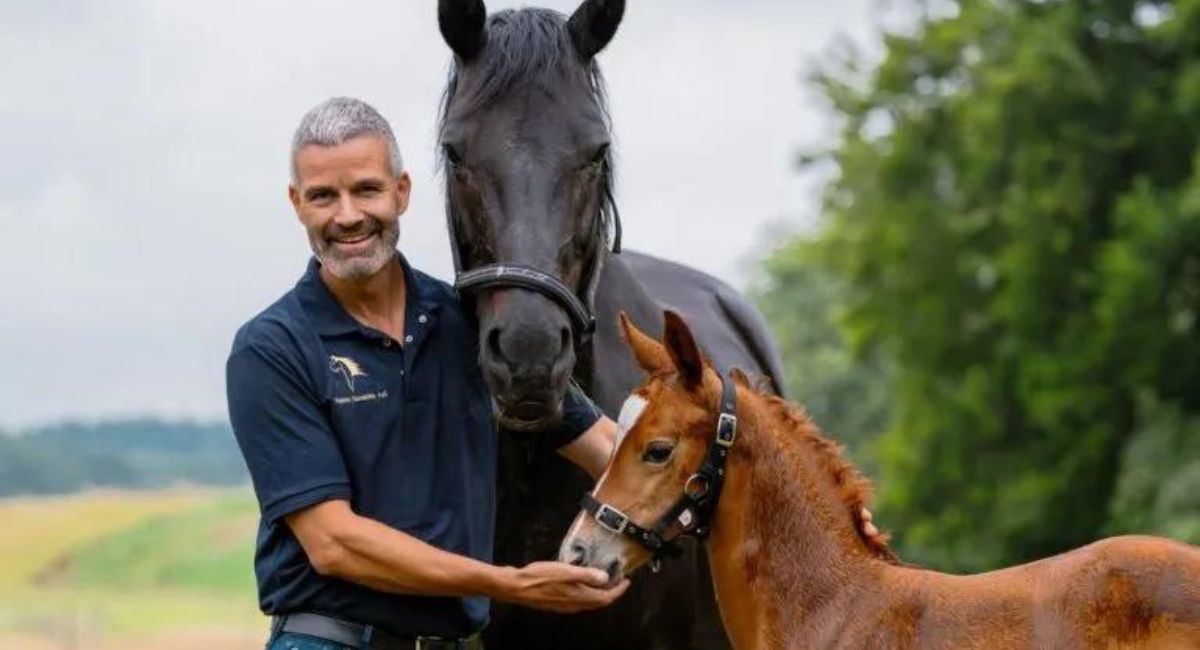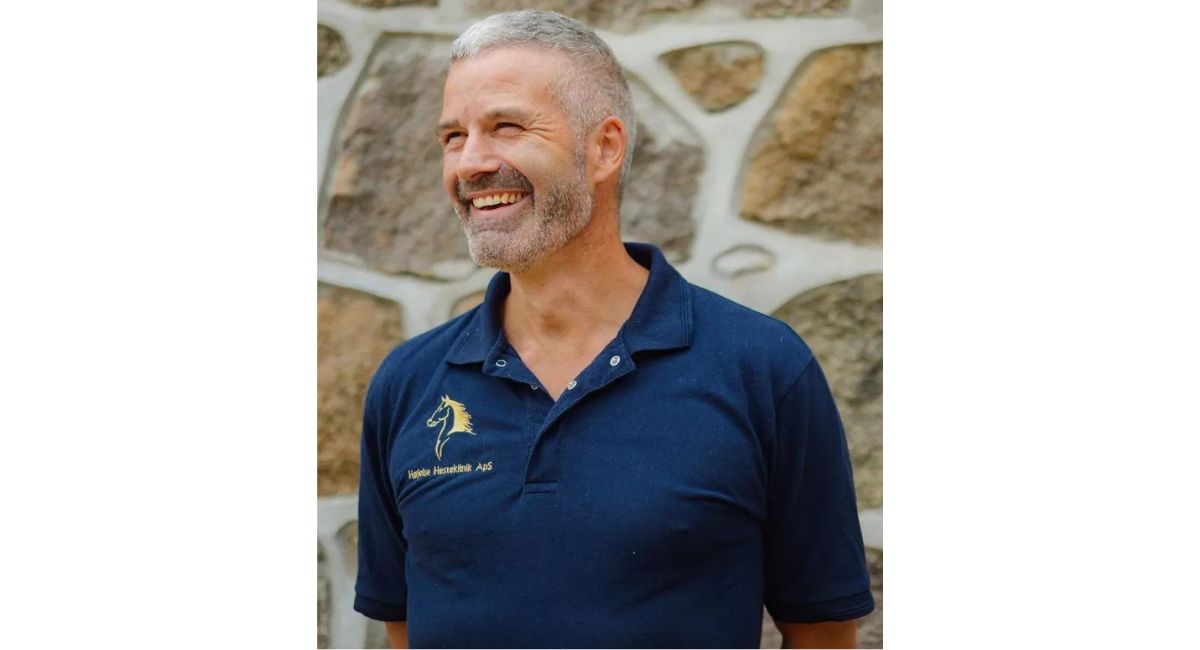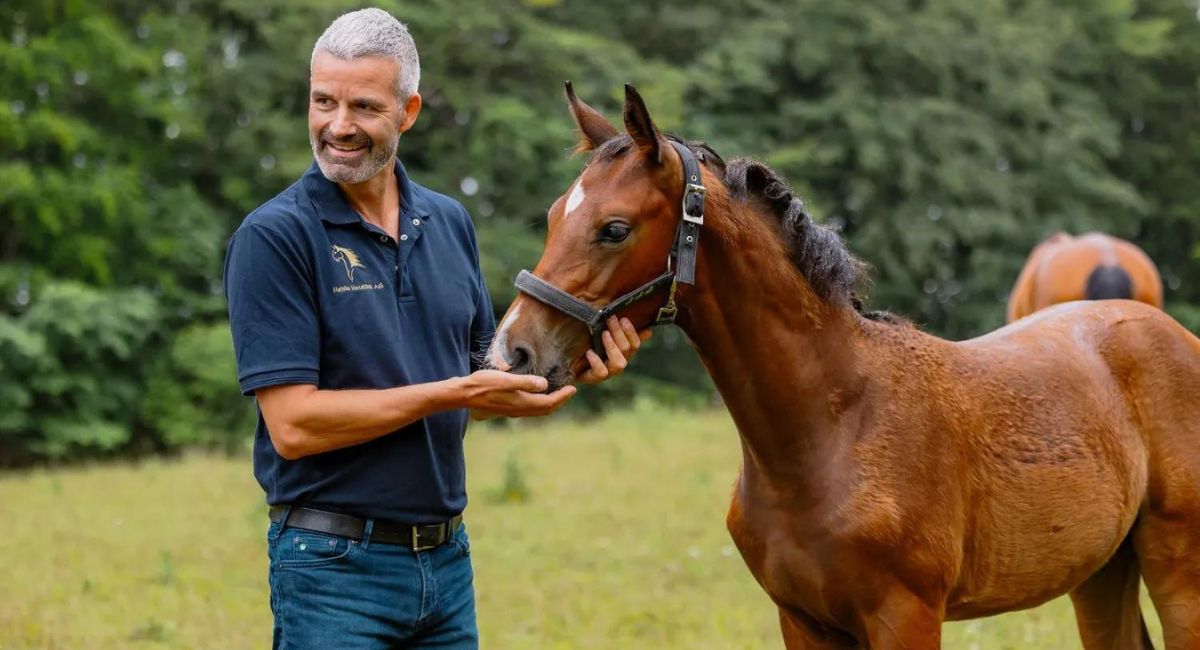Menu

Veterinarian, trainer, and rider Michael Sinding often sees horse owners wanting their horses to meet demands and expectations that are unrealistic for the horse. He believes we need to be better at listening to the horse, practicing understanding it, and being realistic about what the individual horse can and cannot achieve.
Malgré Tout visited Michael Sinding at Atterupgaard. Here he shared his viewpoint on how lack of progress and performance can be caused by misunderstandings and lack of communication between horse and rider. He talked about how he tries to understand horse behavior - why it acts as it does - and from there, find solutions to potential problems in riding.
For two decades, Michael has been the resident veterinarian and a vital part of strategies, treatment plans, and management, and involved in the breeding decisions at Stutteri Atterupgaard. The site has bred some of the world's best dressage horses, such as Olympic-quality horses like Atterupgaards Cassidy, Atterupgaards Orthilia, and Atterupgaards Molberg.
Besides being a veterinarian specialized in horse diseases and a successful breeder, Michael is also a trained, certified coach. He is a horse consultant for several insurance companies and has a daughter on her way to the top in equestrian sports.

"We simply are not good enough at understanding our horses"
Michael Sinding
Frustration, anger, helplessness, and despair are probably not unfamiliar feelings for most riders. These feelings often lead to counterproductive behavior towards our horses, which shortly after makes us regret, feel shame, guilt, and discomfort about our actions.
Michael shares that he has repeatedly experienced these feelings, not knowing how to handle them and their subsequent reactions. He believes it stems from a lack of understanding. We simply do not understand why the horse reacts as it does.
Read also: Kinesiotaping – More than just tricks?
"The horse does not have the intelligence to devise some plan to annoy its rider as much as possible."
Michael Sinding
"The horse reacts the way it experiences the situation. Its behavior is instinct-driven, not intelligence-driven," explains Michael.
If we can learn to understand the horse's behavior and reaction patterns in various situations, we can avoid many of the situations where we feel powerless and frustrated. Instead, both we and the horse end up with a better understanding of each other, and as riders, we become more solution-oriented if we try to understand the horse's behavior better.
Misunderstandings can arise anywhere. But during riding, it often becomes apparent when the horse reacts differently than we expected. This could be due to the horse's lack of understanding of specific exercises, leading to frustration over the ambiguity. Michael advises that in such cases, one should go back to the basics in training. "It might take half a year, where you just have to do something at a much lower level. But it's precisely here that I see many of the 'misunderstood horses', which just lack that half-year's training."
Advertisement Michael also points out that one should always give the horse the benefit of the doubt. Therefore, it's important to first have the horse examined by a veterinarian if it reacts differently than the rider assumed. "It's never a bad idea to examine the horse once too many rather than once too little. I see many cases where there's a physical problem in the horse's body that needs to be resolved."
As Michael explains, there can be several reasons why a horse reacts in different situations. "If the horse stops and starts to rear, it can clearly be a sign that it's in pain. But it could also be that there are gaps in the training, and you've skipped some important foundational steps."
Therefore, if you have your horse examined by a veterinarian and it has no ailments, you may need to move on and consider what the cause of the behavior could be.
The interaction between horse and rider goes both ways. It's important to reflect on why the horse might act as it does, but it's just as important to consider how we ourselves act as riders – and the effect it has on the horse. Michael says:
"You have to consider whether the situation gets better because you kick the horse for looking at something. Because when you get there again, you have actually told the horse that what it's looking at is damn dangerous."
Read also: Asthma: Creating an allergy-friendly stable environment for your horse
Kicking the horse when it looks at something can be seen as a reaction of helplessness, and here it's important to have a tool for how to react differently. Michael explains:
"If instead, the first time it stares, I take a deep breath and don't make a big deal out of it, then the likelihood of me getting to the point where it doesn't do that is much greater than if I kick or get frustrated with the horse."
As riders, we must remember that we are more cognitively developed, not the horse. If we start to see an object or element as a problem, then the horse is likely to do the same, as its behavior is largely influenced by our own.

Michael works at Højelse Horse Clinic, where he daily observes how riders misunderstand their horses.
"I often see at the clinic, people come in and say 'my horse can't stand tied, it can't do this and that', but I often don't experience these issues at all. It becomes a self-fulfilling prophecy, where we transfer our own limitations onto the horse. I have examples of people who can't get their horse into the trailer at the clinic. A good example is a client who had been there for two hours, and I came out and said 'God, are you still here'. I went to the horse with a clear mindset that the horse would go into the trailer, backed the horse a few meters, and then pulled it into the trailer."
This is not to say that we always misunderstand our horses. Of course, the horse may have had various bad experiences, but the trailer example shows how miscommunication, our own expectations for a given situation, and poor interplay between horse and rider can create problems that can become overwhelming. These problems can be apparent from the ground, but they can just as well occur during riding.
Understanding a horse's behavior and reaction patterns can prevent misunderstandings, and here also lies the importance of recognizing the individuality of each horse. Michael Sinding emphasizes this based on his own experience. He has two horses, which are very different. One agrees to everything, while the other is more uncertain, and Michael explains that he has difficulty connecting with this horse. It doesn't trust its rider as much, easily feels pressured, and reacts strongly. He knows from experience that this horse could be labeled unrideable if its individuality is not accepted and considered. This means Michael has two horses, which, age-wise and educationally, should be at the same level but are actually at very different stages in their training.
"We need to reflect on what the horse is and can do. Here, one can really face confrontations, where the horse could almost be declared unrideable. I feel there's a tendency to expect horses to fit into certain systems, and we often forget to look at the horse as an entirely individual being."
"I have a sense that there's an internal understanding in equestrian sports that if a horse cannot do certain things by a certain age, then you as a rider have failed in your training of the horse."
Michael Sinding
And the pressure that thus lies on the rider is transferred to the horse. It can sense that the rider is pressured, which can also result in the rider becoming frustrated when the horse does not meet the desired requirements quickly enough.
Read also: Muscles tell the tale: Is your horse using its body correctly in training?
"There's an unspoken expectation for you as a rider that you can make all horses do the same thing at the same time. And you simply cannot. And if you have a horse with a bit more temperament, it's easy to fall into the trap of tiring it out a bit, so it's easier to handle, and easier to get it to do the things you want it to do. And this quickly leans towards overtraining."
Michael says the most important thing is to accept that it doesn't go as smoothly with some horses as it does with others, and therefore we must adjust where we want to go with the horse and the training. "Accept that we might reach the goal, but we also might not. But it's no use trying to take shortcuts. You have to get ABCDEF on point before moving on to the next letter. It will take the time it takes."
In continuation of recognizing each horse as an individual, it's also a fact that we as humans are individuals. According to Michael, a horse and rider are not always a match. If horse and rider do not match, friction and misunderstandings can more easily arise between the pair.
"I encounter this in my work, where I see horses ending up in the wrong hands. They end up in places where it's just a bad match. Both in terms of the horse's and the rider's temperament, but also the expectations of what is to be achieved within a certain time. I actually try to have this conversation with people. Sometimes it can be difficult because people have to accept that this was a mistaken purchase. To accept that this horse just isn't suitable for what you want – and it doesn't mean that it isn't suitable for something else or at a different level. Here, one might need to compromise occasionally and accept that with this horse, I might not achieve the feeling I dreamed of in the arena, but I have to accept that this is where we get to, and live with it."
Of course, one shouldn't immediately replace the horse, feel it out, take the time it takes, and consider if the problems could be due to an incompatible pair. It's also important that professionals like Michael can help identify a potentially bad match, and according to Michael, there are only two solutions.
"Either the rider must change their own level of ambition – or they must change the horse."
It can be a huge challenge to adjust your level of ambition and perhaps even your goals if you have to acknowledge that you cannot reach them with your horse. According to Michael, it becomes easier the more experience you gain, but it can also be an important thing to practice early on. Perhaps we should also consider the match between horse and rider when we're about to buy a horse. For the sake of both parties, but also to avoid the horse being sold yet again. It's possible that one can go just as far, or further, with a good match and compatibility, and not just with talent, performance, and results.
Read also: Guide for the uncertain: Teaching your horse to ride out alone
There are many factors at play when it comes to whether a horse is misunderstood and possibly changes its behavior for that reason. It's likely that the horse is in pain, but we must remind ourselves that there can also be many other reasons. It could be too much pressure, lack of recognition of individuality, or the match between horse and rider, leading to unwanted behavior in the horse. And often, more than one of these factors may be present – and many other factors can also come into play. We must both look outward and examine whether the horse might be in pain, but we must also look inward – what is the goal, how great is the pressure, what are the expectations, and how do we handle the situation ourselves?